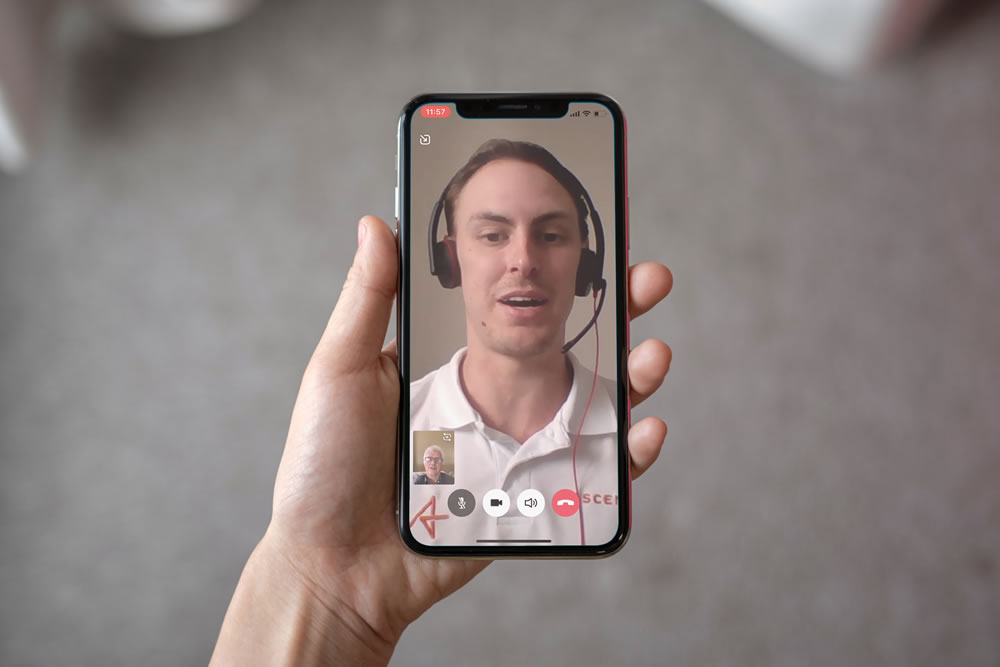
Digital physiotherapy is a type of therapy that allows therapists to monitor patients remotely, even in real-time when appropriate. Digital health services have many benefits and are used by people with various conditions, but digital physiotherapy may be one of the most significant expressions of Telehealth.
Digital physiotherapy is the next big thing in health care. The way we treat patients will change because of how accessible and affordable digital health services are. Doctors can provide a remote service to someone who doesn’t have access to healthcare professionals nearby.
Telehealth services can help people live healthier lives with fewer doctor visits and less need for medications, saving money in the long run.
Digital physiotherapy is an increasingly popular form of treatment because it provides several advantages over traditional physical therapy forms. With digital physiotherapy, the therapist has direct access to the patient’s data on their phone or computer screen, which means they can more closely monitor how much progress the patient has made. More effective offers of advice and treatment can be provided.
Although digital physiotherapy is a relatively new practice, studies have indicated that it delivers similar outcomes to in-person care at all injury levels. Where in-person care is difficult or impossible to provide, digital physiotherapy bridges the gap and makes a significant difference in lives. (1)
With the new global awareness of pandemics, digital physiotherapy has secured its place within the pantheon of treatment options. The shortage of in-person health care providers and geographical distribution made it impossible to provide care for all those who needed it. Digital physiotherapy provided an alternative, affordable treatment option that was more readily available and was entirely safe to use without any risk of disease transmission.
When an elderly population is included in the mix, digital physiotherapy is clearly the best choice for delivering treatment safely and effectively. Even remotely, practitioners can recommend changes to lifestyle that can aid injury rehabilitation and recovery.
Perhaps one of the more significant benefits of digital physiotherapy from the point of view of a patient is the reduced time investment. Your appointment is for a specific time, but you don’t need to spend hours driving many miles through traffic to get there – and you don’t need to sit in a waiting room.
The whole process is completed from the comfort of your own home, making your injury rehabilitation as comfortable as possible. Digital physiotherapy is genuinely a service that is built with the needs of the patient in mind.
References
Virtual physiotherapy is a tested, and proven method of assessment and treatment for the majority of musculoskeletal injuries.
To ensure that you will benefit maximally from our online treatment, we have designed a form that will help us determine if an online consultation is for you. This form will be filled at the beginning of the consultation process, and will determine if you will proceed with us or not.
All of the treatment protocols and adherence to them will be monitored. If you do not get better, further assessments will be made to understand why this is so, and what needs to be changed.
We have a team of medical professionals who are in partnership with us to give you the best care and are always available when their expertise is needed.
Our service is available to you at any time no matter where you are.
© 2025 Avant Garde Physiotherapy | All Rights Reserved
WebApp developed by Exploits Mediatech

There are times when some injuries may not be suited for online physiotherapy alone. In such cases a HYBRID PLAN is ideal. This involves a fusion of online and physical sessions.
To get on the hybrid plan, please fill in your details below.
Thank you for your recent payment. Please fill the form below to complete the transaction.
Our physiotherapists are experts in body movement and function. They are skilled to help you recover from injury, relieve pain and stiffness, restore mobility and improve your quality of life.
READY TO BE PAIN FREE?
Please choose a treatment/consultation type:
Ever heard of the catchphrase, “Prevention is better than cure”? Well, it is actually true. Prevention is not only better, but also cheaper than cure. Many injuries can be avoided or less severe when preventive measures are taken. The way the body is positioned while performing daily tasks at home, work, the gym, soccer field or tennis court determine if an injury is likely to occur or not. Poor body mechanics, posture, sport technique and ergonomics can lead to injuries.

It is our sheer delight to see that you enjoy living. The Avant Garde lifestyle therapy program focuses on promoting healthy behaviors to improve your quality of life and eliminate unnecessary health care costs. It lays emphasis on nutrition, fitness, behavior and support, providing a toolkit to prevent or effectively manage conditions such as high blood pressure, diabetes and weight problems. Our experts will take you through an online assessment to understand your situation and design a lifestyle therapy program for you depending on your needs.
You’ll receive
Please choose a treatment/consultation type:
Sitting at your desk for long hours increases your risk of having pain, injuries and disability. An easy way to combat work-related musculoskeletal disorders is to choose an ergonomic desk set up.
Is your desk-life causing you aches and pains in your neck, arms, back or even legs?
Have you spent your hard-earned cash on an “ergonomic” chair only to find out that it does not provide the comfort and support needed for your back?
Do you want to set up your office desk and aren’t sure about the right furniture for you?
Start a consultation. Receive
Orthopedic braces are sometimes prescribed during recovery and injury rehabilitation. They usually come in a wide range of shapes, styles and sizes, posing a bit of a challenge in knowing the appropriate one for you.
The Avant Garde bracing solutions assessment allows you to get professional recommendations on the best brace for your specific needs.
Start an online consultation and let us guide you in choosing the perfect brace for your needs.
The consultation process is simple and involves completing an online questionnaire. You’ll need to upload a picture of the area that requires bracing, and we’ll create a personalized report for you.
You’ll also need to have a tape measure ready to ensure that the brace is the correct size for you. You receive final recommendations for a suitable brace after you’ve completed an online video consultation with a skilled physiotherapist.
Hurting back, achy knees or a sprained ankle? Don’t normalize your pain. Our goal is to help you live pain free and maximize your body’s function through innovative treatment strategies so that you gain the freedom to pursue your dreams, elevate your performance at work or play, and live the life you enjoy.
The best part is that you don’t have to leave the comfort of your home, office or wherever you choose. You don’t have to travel for miles, spend hours in traffic, or lose time sitting in waiting rooms to see a qualified physiotherapist.
Avant Garde Physiotherapy is a technology-driven online physiotherapy clinic without walls. We are an intriguing merge of healthcare and technology, delivering effective physical and lifestyle therapy services while keeping your safety and convenience as our priority.
We are a futuristic tech-driven physiotherapy practice with a deep sense of value for people at the core of our organization. Our vision is to drive the evolution of client-centric care by bringing physical and lifestyle therapy to individuals, families, and organizations.
Our service model involves identifying gaps in physiotherapy care and designing innovative solutions to meet these needs. The Avant Garde online physiotherapy consultation is just as effective as an in-person consultation. For better outcomes, we include lifestyle therapy and modification into our personalized treatment plans.
We are a growing team of dynamic individuals that inspire a culture that applies health to everyday living. As advocates of preventive healthcare, we educate and guide our clients on how to avoid injuries that would otherwise disrupt an enjoyable lifestyle. We believe that physiotherapy is a partnership between the client and the physiotherapist. We hold up our end of this partnership by serving with our unique strengths, treating each client with empathy, and maintaining the highest level of professionalism.
Oluchi Ihekuna is a qualified physiotherapist with over 10 years’ experience in orthopedics and sports physiotherapy. She specializes in injury prevention and rehabilitation and has a certificate in Improving Global Health, focusing on quality and safety from Harvard University. Oluchi is a patient advocate and channels this into her work. She has a daily resolve to inspire healthy lifestyles and help people elevate their quality of life.

Telehealth is the delivery of health care services and health education via remote technologies where patients and providers are separated by distance.
We harness the power of modern technology to exchange information between physiotherapists and patients for the purpose of education, assessment, diagnosis, and treatment.
Consultations are typically conducted over the phone, computer, or other digital communication technologies and provide a way for our esteemed clients to receive their sessions remotely and on their own time without the need to travel.
Online physiotherapy sessions are safe, secure, and easily accessible, giving each patient the information and support they need at the right time.
There are times when some injuries may not be suited for online physiotherapy alone. In such cases a hybrid plan is ideal. This involves a fusion of online and physical sessions.
Watch the video to learn more



Virtual physiotherapy is a tested, and proven method of assessment and treatment for the majority of musculoskeletal injuries.
To ensure that you will benefit maximally from our online treatment, we have designed a form that will help us determine if an online consultation is for you. This form will be filled at the beginning of the consultation process, and will determine if you will proceed with us or not.
All of the treatment protocols and adherence to them will be monitored. If you do not get better, further assessments will be made to understand why this is so, and what needs to be changed.
We have a team of medical professionals who are in partnership with us to give you the best care and are always available when their expertise is needed.
Our service is available to you at any time no matter where you are.
We are here and ready to help.
We have amazing tips that would help prevent injury and improve the quality of your health.
Subscribe to get them here.
Connect with us on social media
Your ergonomic workstation assessment process
You’ll need a tape measure and a smartphone with a camera to complete the questionnaire, and it’s preferable that someone can help you take photos.
Taking just a few minutes to ensure you have an ergonomic desk set up can prevent aches and pains later on.
FOR COMPANIES
Are you a high-performance organization interested in boosting the productivity of your team? Do you value the wellbeing of you staff or have a safety culture?
Here are some benefits of ergonomics in the workplace
Our Offerings include
Ergonomic Trainings and Check-ups
Ergonomic Audit
Employee Discomfort Survey
One-on-One Office Ergonomic Assessments
Ergonomic Office Equipment and Furniture
MORE ON
The Avant Garde bracing solutions assessment allows you to get professional recommendations on the best brace for your specific needs.
Start an online consultation and let us guide you in choosing the perfect brace for your needs. You receive final recommendations for a suitable brace after you’ve completed an online video consultation with a skilled physiotherapist.
It is our sheer delight to see that you enjoy living. The Avant Garde lifestyle therapy program focuses on promoting healthy behaviors to improve your quality of life and eliminate unnecessary health care costs. It lays emphasis on nutrition, fitness, behavior and support, providing a toolkit to prevent or effectively manage conditions such as high blood pressure, diabetes and weight problems. Our experts will take you through an online assessment to understand your situation and design a lifestyle therapy program for you depending on your needs.
You’ll receive
Avant Garde Ergonomic Store
In response to numerous requests, we are working tirelessly to deliver client-centric ergonomic store. It will provide workstation and ergonomic products and accessories that suit your needs whether you are working on injury rehabilitation or looking for a way to prevent injuries in the future.
COMING SOON
Avant Garde Brace Store
We are working round the clock to bring you quality orthopedic braces and supports that are fashionable and functional at the same time.
COMING SOON